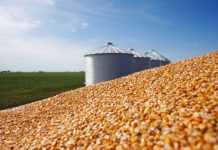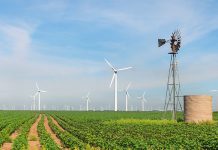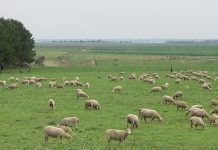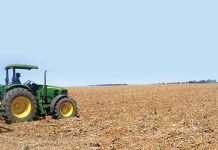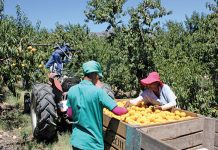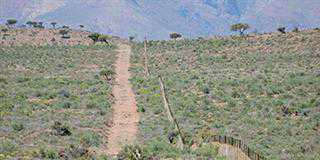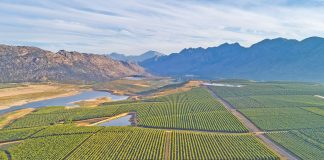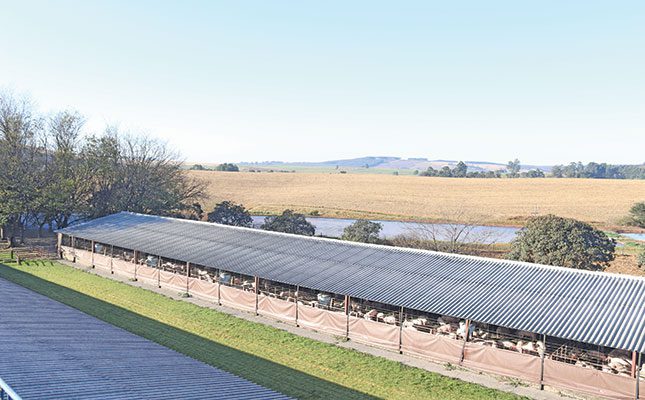
Photo: Lindi Botha
Any large-scale undertaking of food production is bound to have an impact on the environment, and while it can’t be avoided for the sake of food security, how and where the food production takes place, and how the farmer manages the land, need to be carefully considered.
Whether you have just bought a piece of land or want to develop your farm further, you will need to conduct an Environmental Impact Assessment (EIA) to receive legal authorisation to continue with your plans.
The EIA will determine if the farming activities will have a detrimental effect on the environment, to what extent, and if you can go ahead with your farming plans at all.
The National Environmental Management Act (NEMA), No. 107 of 1998, stipulates which activities are deemed harmful, and can include farming in wetlands, close to protected water sources, in areas where scarce species are listed, or where the current biodiversity status must be maintained.
Farmers can unfortunately not undertake the EIA by themselves, but need to contract an environmental assessment practitioner (EAP) to do the job.
The right expertise
Contracting the right service provider is an important step in getting a farm’s affairs in order, since not having the right authorisations in place can lead to big financial implications in future.
An EIA can only be conducted by a qualified and independent EAP who is registered with the Environmental Assessment Practitioners’ Association of South Africa (EAPASA). This is a NEMA EIA professional practice regulatory body in South Africa.
Armed with a passion for agriculture and the environment, becoming an environmental practitioner was the ideal career solution for Ngwanarachuene Mampane, director of Westleigh Environmental Services. She started her business 10 years ago after recognising the need for reliable, quality EAPs that could assist farmers in the Limpopo area.
She believes that having an EIA in place is more than just compliance and meeting regulatory requirements. “It is an act of nurturing our precious environment and mitigating the negative effects of climate change for our future generations.”
Mampane does not lack qualifications or expertise. In addition to being an independent registered EAP with EAPASA, she is also a certificated agricultural scientist with the South African Council for Natural Scientific Professions, and an active affiliate of the International Association for Impact Assessment in the South African branch.
Her advice for farmers who are considering buying land or expanding their operations is to have an EIA done before finalising decisions.
READ Biodiversity: a valuable ally for the farmer
“Even in cases where agricultural activities stay the same, but owners have changed, the environmental authorisation document needs to be updated to include the details of the new owner, so that they can take over the environmental obligations on the farm,” she says.
Where farmers already have an environmental authorisation in place for a section of the farm but want to expand the area under production, an application for expansion can be done. This also applies to expanding the farm in a way that would make its environmental impact more pronounced.
Mampane laments that farmers don’t always realise that they require environmental authorisation to farm, and so many operate without these legal documents in place. Fortunately, there is recourse for these farmers, but it comes at a price.
“Farmers will be liable for a fine in this instance, the size of which will depend on the severity of the impact to the environmental and social economy. It’s therefore best to check with an EAP or the local environmental department if you need an EIA before starting any farming activity.”
Two types of assessments
Mampane notes two types of EIA assessments: the basic assessment report (BAR) for listing activities that bear lesser impact to the environment, and the scoping and environmental impact report (S&EIR) for activities with greater impact on the environment.
The types of farming activities that require an EIA be done are extensive, but include the following:
- Clearance of indigenous vegetation in a normal farming area or within critical biodiversity areas, ecological support areas, protected areas, or any sensitive area as listed per province;
- The development of farm infrastructure such as roads, dams, bridges, infrastructure or facilities for the generation of electricity from renewable or non-renewable resources;
- Facilities or infrastructure for the slaughter of animals (abattoirs): 50 poultry units per day; reptiles (crocodiles), game and red meat six units per day; or wet weight product throughput of fish, crustaceans or amphibians exceeding 20t/year;
- Facilities or infrastructure for the concentration of animals in densities that exceed 20m²/large stock unit and more than 500 units per facility; 8m²/small stock unit and more than 1 000 units per facility; more than 250 pigs per facility, excluding piglets that are not yet weaned; 30m² per crocodile and more than 20 crocodiles per facility; 3m² per rabbit and more than 500 rabbits per facility; or 250m² per ostrich or emu and more than 50 ostriches or emus per facility;
- Facilities or infrastructure for the concentration of more than 1 000 poultry per facility situated within an urban area, excluding chicks younger than 20 days; more than 5 000 poultry per facility situated outside an urban area, excluding chicks younger than 20 days; more than 5 000 chicks younger than 20 days per facility situated within an urban area; or more than 25 000 chicks younger than 20 days per facility situated outside an urban area;
- Hatcheries or agri-industrial facilities outside industrial complexes where the development footprint covers an area of 2 000m² or more;
- Facilities, infrastructure or structures for large scale aquaculture.
The process
An EIA is a broad process that is used to investigate, evaluate and measure the level and type of negative or positive impact a particular NEMA-listed activity may have on the environment. Social and economic aspects during the construction and operational phases of such an activity are also taken into account.
Mampane says the EIA is ultimately also a tool that helps to guide farmers in operating in an environmentally friendly manner on a daily basis, to practise good housekeeping, implement effective farm biosecurity measures, water saving, energy efficiency, good waste management and biodiversity protection. This also serves to improve and increase their crop or animal farming yields.
READ Establishing effective biosecurity measures on your farm
The process starts with a desktop assessment of the whole farm to establish the boundaries of the property. A map is developed to show the geographical and ecological properties of the site. This includes the landscape, soils, water, air, flora, fauna, heritage and cultural aspects. The need and benefit of the farming activity, and the socio-economic benefits, are also assessed.
Mampane says the specific development footprint that shows the extent of the activity needs to be calculated and shown on a site layout plan. “This is then layered on the sensitivity map of the farm to ensure that the development footprint does not overlap on any environmentally sensitive areas.”
The aim of this assessment is to measure, evaluate and understand the nature, significance, consequences, extent, duration and probability of potential environmental impacts and risks associated with the proposed activity. This information guides the relevant competent authority (CA) on deciding whether the environmental authorisation application can be granted or refused.
Each province in South Africa has a CA that is responsible to administer EIAs. Applications are therefore lodged at a provincial CA, depending on the geographical location of the land where an EIA is applied for.
“Before conducting an EIA, we develop an environmental screening report for the farm, which is a mandatory tool used to assess the environmental sensitivities and determine which specialist studies will be required for the site and the activity being applied for. It also provides information on other developmental guidelines and bioregional plans in terms of Regulation 16 (1) (v) of the EIA regulations,” Mampane explains.
Time frames
One of the biggest concerns in applying for such authorisations is the time it can take to follow due process.
Mampane explains that the time frame in which an EIA can be completed is dependent on government-regulated time frames, site visits, report development, and specialist assessments. There are however mandatory submission time frames that the process needs to adhere to. But, each project is unique and its level of complexity will determine how long the process will take.
A final BAR must be submitted to the CA within 90 days of receipt of the application by the CA, whereas the S&EIR submission must be presented between 44 and 106 days.
This must include any specialist reports, an environmental management programme and, where applicable, a closure plan, which has been subjected to a public participation process (PPP) of at least 30 days. Should an extension of time to submit these reports be required, it should be done in writing to the CA timeously.
This brings Mampane to the point of the PPP. “This is an open communication process that gives the neighbouring landowners, local community, local councillor, local municipality, organs of state and all interested and affected parties an opportunity to participate and comment on the EIA process. This commenting process is 30 days.”
The PPP notices are formal notification letters, emails, notices placed on site notice boards, local newspapers and Government Gazette advertisements. Important to note is that the period between 15 December and 5 January as well as public holidays are excluded in the EIA time frames.
Once all these boxes have been ticked, the CA has a maximum of 107 days after the receipt of the BAR or S&EIR to grant or refuse environmental authorisation.
The work does not stop there, and there is then an appeal process where the applicant must notify all the registered interested and affected parties in writing about the application outcome within 14 days of the date of the decision on the application, and also give these parties an opportunity to appeal within 20 days, should they wish to.
Complications
There can be various reasons why environmental authorisation is refused, and these are largely dependent on the uniqueness and challenges of each project.
Mampane elaborates that it is important to consider the zone of the site where an EIA is being applied for.
“The activity applied for needs to be in line with the developmental or town planning zone of the area and the allowed activities or practices within that zone. For example, agricultural farming activities are allowed in agricultural zones and not in residential zones.
The EIA will also be sent to the local municipality that has jurisdiction over the site for comments. The activity applied for therefore needs to be in alignment with the municipality spatial plans and by-laws.
“The properties of the site are also very important when applying for an EIA, and the size of the site in comparison to what you are applying for is taken into account. For example, in the development and operation of chicken houses, one requires sufficient space considering the biosecurity aspects. So how far your farm is from other poultry farms, as well as the distance from neighbours, matters.”
The PPP report will also have an impact on the EIA being authorised or not. If there are objections from interested and affected parties, the CA may determine the application outcome based on the grounds of objections and the provided impact mitigation measures. Mampane says that it is not uncommon that a project is refused if the negative impacts outweigh the positive ones.
What does it cost?
The good news is that fees to have an EIA done are regulated by EAPASA, and fees are therefore transparent.
The depth of the report will however determine what the final cost will be, with a BAR costing less than a S&EIR.
The amount of hours spent working on the project, the size of the farm, the type of listed activity an applicant is applying for, the geographical location (which affects the travelling time), and the PPP notices and advertisement costs also have an impact on the cost. Further, the extent of the specialist assessments the site would require can also push up the price.
Mampane explains that for the latter, an environmental screening report provides guidance on the specialist assessments that will be required, and it is the duty of the EAP to then motivate with reasons if some studies will not be necessary.
Being environmentally compliant assists farmers when applying for financial assistance and for gaining funding opportunities as this is a global mandatory requirement. An investment in an EIA is therefore a lifetime investment into the business and the farming industry as a whole.
Email Ngwanarachuene Mampane at [email protected].

